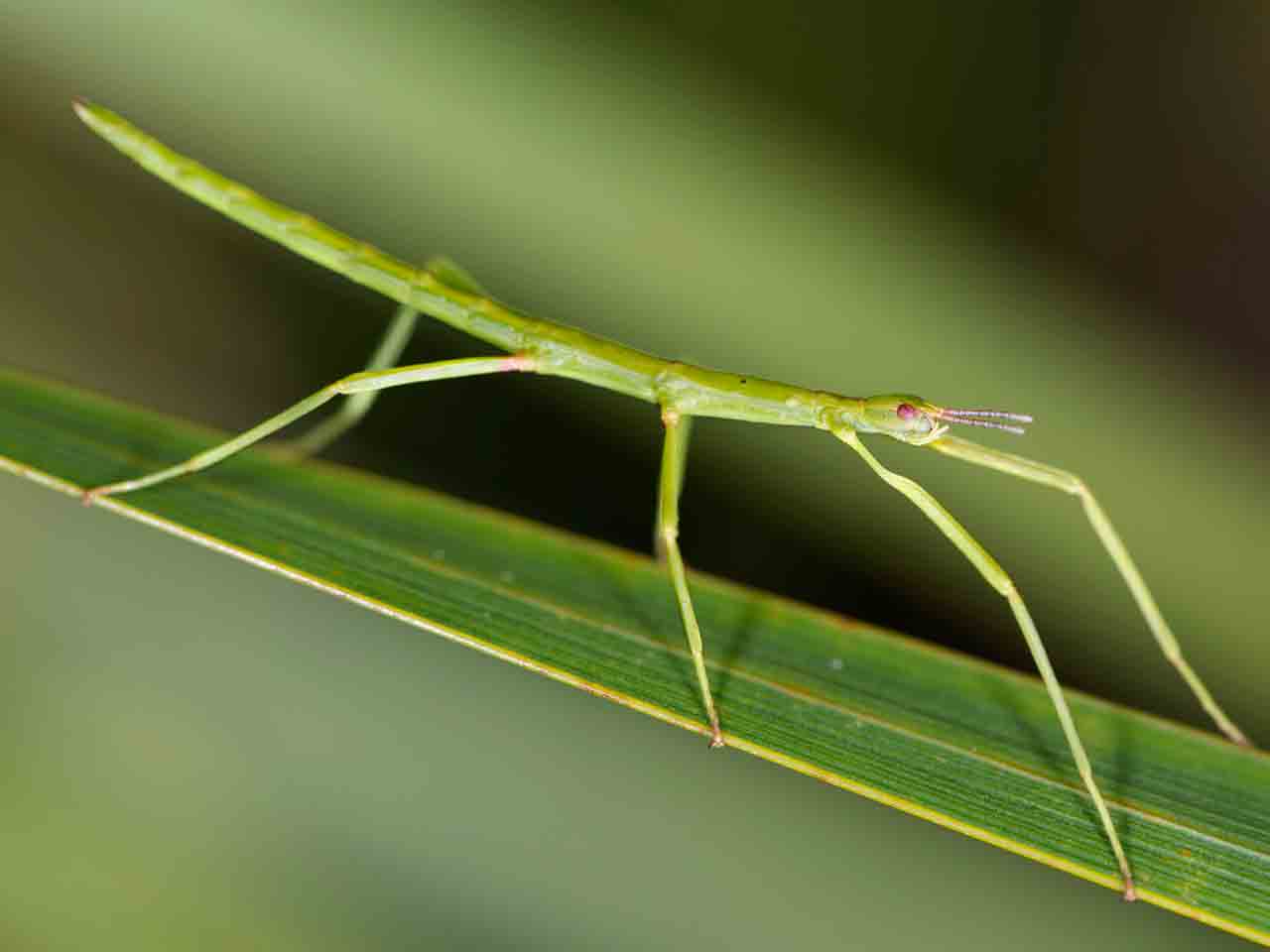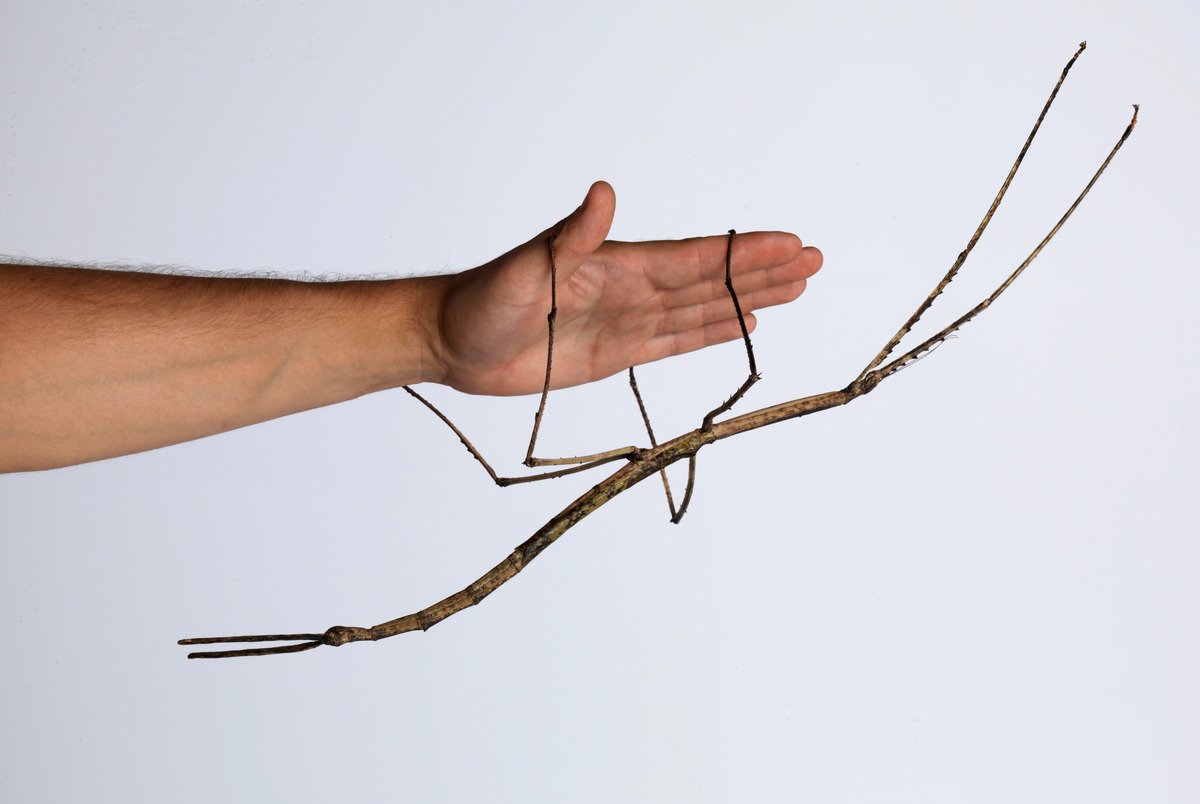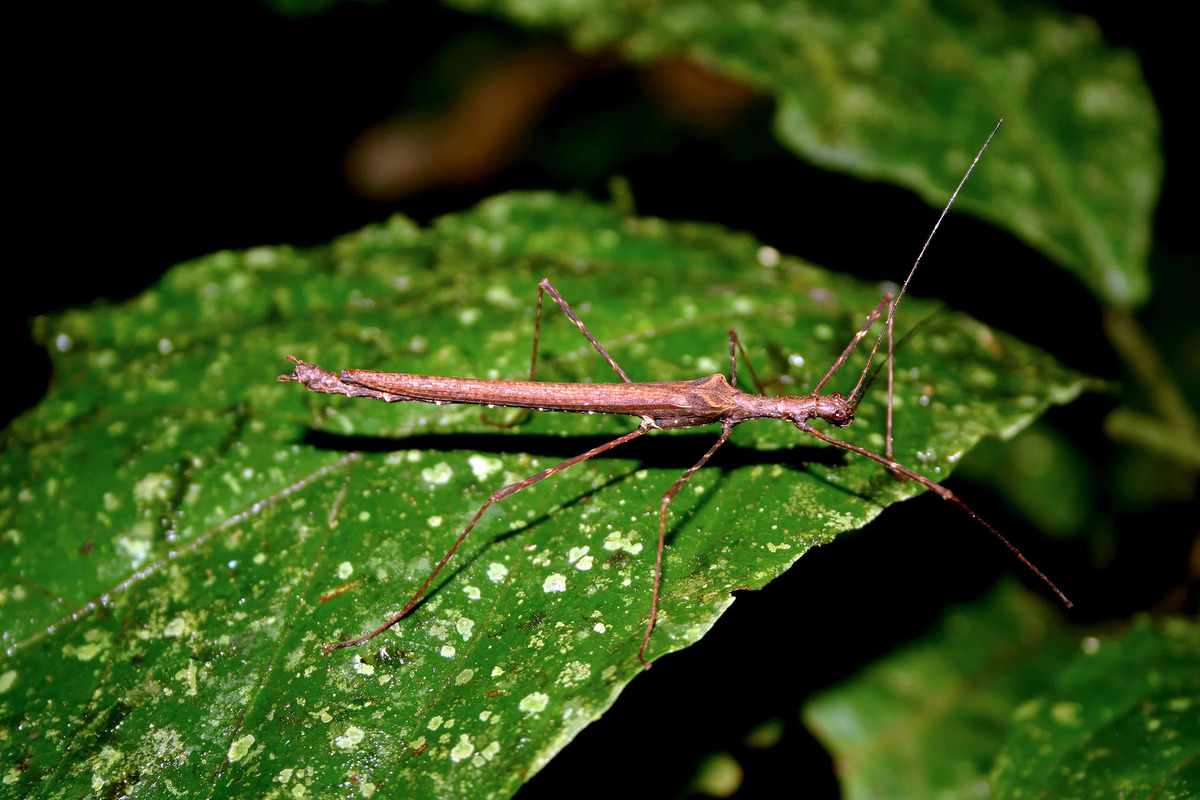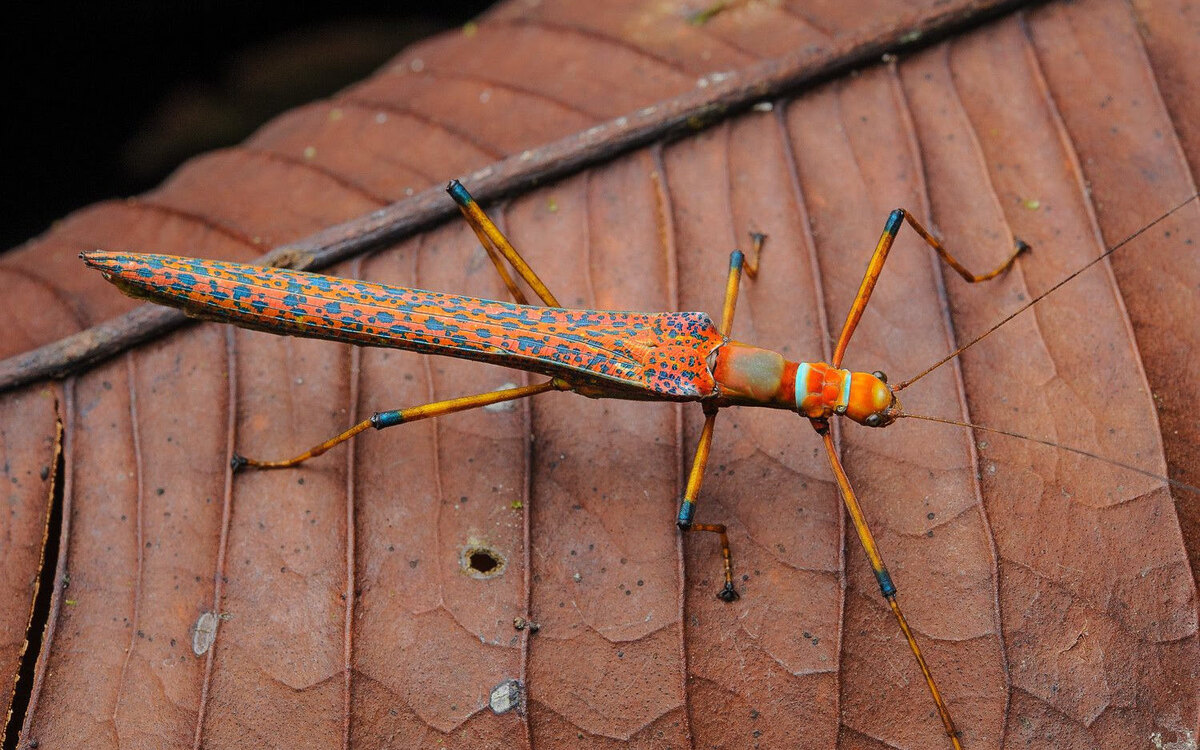Home>Gardening News and Trends>Latest News>How Long Do Stick Insects Live


Latest News
How Long Do Stick Insects Live
Modified: January 22, 2024
Discover the latest news about stick insects and learn about their lifespan. Find out how long stick insects typically live and what factors can affect their longevity.
(Many of the links in this article redirect to a specific reviewed product. Your purchase of these products through affiliate links helps to generate commission for Chicagolandgardening.com, at no extra cost. Learn more)
Table of Contents
Introduction
Stick insects, also known as Phasmids, are fascinating creatures that have captivated the interest of entomologists and nature enthusiasts alike. These unique insects are famous for their remarkable camouflage abilities, resembling sticks or branches to blend seamlessly with their surroundings. While they may appear as simple twigs, stick insects have complex lifecycles and behaviors that make them incredibly intriguing. One of the questions often asked is how long do stick insects live?
Stick insects can be found in various parts of the world, with over 3,000 known species. They come in different shapes, sizes, and colors, ranging from a few centimeters to over a foot in length. Despite their diverse characteristics, stick insects share one common trait: they are masters of disguise. This adaptation helps them avoid predators and survive in their natural habitats, which range from rainforests and deserts to grasslands and gardens.
The lifespan of stick insects can vary depending on several factors, including species, environment, and care. Understanding their lifespan is crucial for those who keep them as pets or study them in scientific research. In this article, we will explore the factors that influence stick insect lifespan, both in the wild and in captivity, as well as discover how to extend the lifespan of these incredible insects.
What are Stick Insects?
Stick insects, scientifically known as Phasmids, are fascinating insects that belong to the order Phasmatodea. They get their common name because they resemble sticks or branches, which helps them camouflage and blend in with their natural surroundings. These insects can be found in diverse habitats all around the world, including tropical rainforests, dry deserts, grasslands, and even urban gardens.
Stick insects come in a wide range of sizes, with some species measuring only a few centimeters long, while others exceed a foot in length. They vary in color and appearance, with some species having long, slender bodies, while others have a bulky and spiky appearance. Their unique physical characteristics allow them to mimic different plant structures and evade predators effectively.
One of the most fascinating aspects of stick insects is their ability to regenerate lost limbs. If a stick insect loses a leg due to injury or an encounter with a predator, it has the remarkable ability to regenerate it over time. This regrowth capability is known as autotomy and is an important defense mechanism for these insects.
Additionally, stick insects have the incredible ability to reproduce through parthenogenesis. This means that females can lay eggs without the need for fertilization by males. This adaptation allows them to reproduce rapidly and populate new areas efficiently. However, some stick insect species still require fertilization from males to reproduce.
Stick insects are primarily herbivores, feeding on various plant materials such as leaves, flowers, and bark. They have specialized mouthparts designed for chewing plant matter, and their diet may vary depending on their species and environment. Some stick insects have specific plant preferences, while others are more adaptable and can feed on a wide range of plant species.
Overall, stick insects are remarkable creatures that have evolved unique adaptations to survive in their environments. Their uncanny resemblance to sticks and their ability to regenerate limbs make them truly captivating insects that continue to amaze and intrigue scientists and nature enthusiasts alike.
Factors Affecting Stick Insect Lifespan
The lifespan of stick insects can be influenced by various factors, both in their natural habitats and in captivity. Understanding these factors is essential for ensuring the well-being and longevity of these fascinating creatures. Here are some of the key factors that can impact stick insect lifespan:
- Species: Different species of stick insects have different lifespans. Some species may only live for a few months, while others can live for several years. It is important to research and understand the specific lifespan of the species you are working with or keeping as pets.
- Environment: The natural habitat of stick insects plays a significant role in their lifespan. Factors such as temperature, humidity, and availability of food and water can greatly impact their longevity. Stick insects require an environment that closely mimics their natural habitat to thrive and live a full lifespan.
- Nutrition: A healthy and balanced diet is vital for stick insect lifespan. Stick insects primarily feed on plant materials, so providing a variety of fresh and suitable food sources is essential. Some species may have specific dietary preferences, so it is crucial to research and provide the appropriate food for the species you are caring for.
- Predators: Predation is a major threat to stick insects in the wild. Birds, reptiles, and other insects are common predators that can significantly reduce their lifespan. The ability of stick insects to camouflage and blend in with their surroundings is critical for avoiding predators and increasing their chances of survival.
- Reproduction: The reproductive process can have an impact on stick insect lifespan, especially in females. Mating and the subsequent egg-laying process can be physically demanding for females and may shorten their lifespan. Additionally, the lifespan of stick insects raised in captivity can be influenced by the stress and strain of breeding programs.
- Stress and Environmental Conditions: Stick insects are sensitive creatures that can be affected by various stressors. Sudden changes in temperature, humidity, or drastic disturbances in their environment can cause stress and impact their lifespan. It is crucial to create a stable and comfortable environment for stick insects to minimize stress and promote longevity.
By considering these factors and providing the appropriate care, stick insects can have a better chance of living a full and healthy lifespan. Whether in their natural habitats or captivity, it is important to create an environment that meets their specific needs and allows them to thrive.
Lifespan of Stick Insects in the Wild
The lifespan of stick insects in the wild can vary depending on species, environmental factors, and predation risks. While individual lifespans can differ, stick insects typically have relatively short lifespans in their natural habitats. Most stick insects in the wild live for a few months to a couple of years.
It is important to note that stick insects have different life stages, including egg, nymph, and adult. The overall lifespan of stick insects incorporates the duration of each stage. The amount of time spent in each stage can vary between species, with some species having longer nymph stages compared to others.
In the wild, stick insects face various challenges that can shorten their lifespan. Predation is a major threat, as they are a food source for birds, reptiles, and other insects. Their camouflage capabilities and behavior of staying still help them avoid detection, but they are not immune to predators. Stick insects rely on their resemblance to twigs or branches to blend in with their surroundings, making it difficult for potential predators to spot them.
Environmental factors, such as temperature, humidity, and availability of food and water, also impact stick insect lifespan. Stick insects are ectothermic creatures, meaning their body temperature is regulated by the ambient temperature. Extreme weather conditions, such as cold temperatures or drought, can be detrimental to their survival.
The availability and quality of food sources are essential for the survival and longevity of stick insects. Different species have specific dietary preferences, and the nutritional content of the food they consume can affect their overall health and lifespan. In areas where food sources are scarce, stick insects may not survive for extended periods.
Furthermore, stick insects have unique reproductive strategies that can influence their lifespan. Female stick insects typically lay eggs, and the reproduction process can be physically demanding. The energy expended during egg production can lead to a shorter lifespan for females.
Overall, in the wild, stick insects face natural challenges that can impact their lifespan. Predation, environmental conditions, food availability, and reproductive processes all play a role in determining how long stick insects live in their natural habitats. Despite their relatively short lifespans, these peculiar insects continue to thrive and intrigue researchers and nature enthusiasts alike.
Lifespan of Stick Insects in Captivity
When kept in captivity, stick insects often have longer lifespans compared to their wild counterparts. The exact lifespan can still vary depending on the species of stick insect, the care provided, and the environmental conditions in which they are kept.
In controlled environments, stick insects are protected from many of the natural predators and environmental challenges they would face in the wild. This increased safety allows them to live longer and reach their full potential lifespan.
Some species of stick insects can live for several years in captivity. However, it’s important to note that other species may have shorter lifespans, with individuals living for just a few months to a year. It is crucial to research the specific species and their longevity expectations before acquiring them as pets.
The conditions and care provided in captivity can greatly influence the lifespan of stick insects. Temperature and humidity play a crucial role in their overall well-being and longevity. It is essential to create an environment that closely resembles their natural habitat, providing the appropriate temperature and humidity levels for the species being kept.
In terms of nutrition, stick insects require a consistent and suitable diet to thrive in captivity. Providing a variety of fresh, pesticide-free plant materials that are appropriate for their species is vital. Some species have specific dietary preferences, and it is essential to understand and provide the appropriate foods to meet their nutritional needs.
The stress levels experienced by stick insects in captivity can also impact their lifespan. Minimizing disturbances and creating a calm and stable environment is key to reducing stress. Handling stick insects should be done with care and only when necessary to avoid causing unnecessary stress or harm.
In addition, proper housing and adequate space are crucial for stick insects to exhibit natural behaviors and have room to molt and grow. Providing vertical or horizontal climbing surfaces, branches, and appropriate substrates can enhance their quality of life and contribute to their overall longevity.
Regular monitoring of stick insects in captivity is important to detect any signs of illness or stress. Early intervention and appropriate veterinary care can help prevent any potential health issues that could impact their lifespan.
When provided with the right conditions and care, stick insects can have extended lifespans in captivity. The precise duration will depend on species-specific factors, meeting their environmental needs, nutrition, minimizing stress, and ensuring a safe and suitable living space. By providing optimal care, stick insect enthusiasts can enjoy the company of these captivating creatures for many years.
Factors Influencing Stick Insect Lifespan in Captivity
Several factors can significantly influence the lifespan of stick insects in captivity. While stick insects generally have longer lifespans when kept in controlled environments, these factors can impact their overall health and longevity:
- Species: Different species of stick insects have varying lifespans in captivity. Some species may live for several years, while others have shorter lifespans. It is crucial to research and understand the lifespan expectations of the specific species you are keeping.
- Environment: The environmental conditions in which stick insects are kept play a crucial role in their lifespan. Maintaining appropriate temperature and humidity levels, providing suitable lighting, and ensuring good air circulation are essential for their well-being and longevity. Fluctuations or extremes in these conditions can negatively impact their health.
- Nutrition: A balanced and nutritious diet is essential for the overall health and longevity of stick insects. Providing a variety of fresh and suitable plant materials for feeding is critical. Different species have specific dietary requirements, so it is important to research and provide the appropriate food sources to ensure their nutritional needs are met.
- Handling and Stress: Stick insects are delicate creatures, and excessive handling or stress can adversely affect their well-being and lifespan. Minimizing disturbances and handling them only when necessary helps reduce stress levels. Providing a calm and quiet environment can contribute to their overall health and longevity.
- Molting and Growth: Stick insects undergo a molting process to shed their old exoskeletons and grow. Providing appropriate housing and enough space for them to molt and grow is crucial. Insufficient space or inappropriate substrates may hinder the molting process and impact their overall health and lifespan.
- Genetics: Genetics can also play a role in stick insect lifespan, just as in many other living organisms. Some individuals may inherit certain traits or predispositions that can affect their overall health and longevity. While this factor is beyond our control, providing optimal care can help mitigate any potential genetic predispositions that may impact lifespan.
By considering these factors and providing appropriate care, stick insects can have an increased chance of living a longer and healthier life in captivity. Maintaining a suitable environment, providing proper nutrition, minimizing stress, and understanding the specific needs of the species you are keeping are key to ensuring their well-being and extending their lifespan.
How to Extend the Lifespan of Stick Insects
If you are keeping stick insects in captivity, there are several measures you can take to help extend their lifespan and ensure their overall well-being. By implementing these practices, you can maximize their longevity and enjoy their company for a longer period:
- Provide Suitable Environmental Conditions: Create an environment that closely resembles their natural habitat. Maintain appropriate temperature and humidity levels, provide proper lighting, and ensure good air circulation. Stick insects are ectothermic, so providing a stable and comfortable environment is crucial for their health and longevity.
- Ensure Proper Nutrition: Offer a varied and balanced diet that meets the specific needs of your stick insect species. Research their dietary preferences and provide fresh, pesticide-free plant materials. Regularly monitor their food sources and remove any spoiled or uneaten items to maintain optimal nutrition.
- Minimize Stress: Avoid excessive handling or disturbances that can stress stick insects. Handle them gently and only when necessary. Provide a calm and quiet environment with minimal disruptions to help reduce stress levels and promote their overall well-being.
- Allow Sufficient Space for Molting and Growth: Provide adequate housing and ample space for stick insects to molt and grow. Use appropriate substrates and climbing surfaces to support their molting process. Insufficient space can hinder their growth and lead to health issues, so ensure they have enough room to thrive.
- Monitor for Signs of Illness: Regularly observe your stick insects for any signs of illness or abnormal behavior. Look for changes in appetite, mobility, or appearance. If you notice any concerning symptoms, consult a veterinarian experienced in insect care to ensure prompt and appropriate medical attention.
- Practice Good Hygiene: Maintain a clean living environment for stick insects. Regularly clean their enclosure, removing any waste or spoiled food. Keep their habitat free from pests and ensure proper ventilation to prevent the growth of harmful bacteria or fungi.
- Education and Research: Stay informed about the specific needs and care requirements of your stick insect species. Continually educate yourself on their natural behaviors, lifespan expectations, and any updates or advancements in stick insect care. This knowledge will aid in providing the best possible care for your stick insects.
By implementing these practices, you can help extend the lifespan of your stick insects and create an optimal environment for their well-being. Remember that each stick insect species is unique, so it is important to research and understand the specific needs of the species you are caring for to ensure they thrive and live a long, healthy life in captivity.
Conclusion
Stick insects, with their incredible camouflage and fascinating behaviors, continue to mesmerize and intrigue people around the world. Understanding the factors that influence stick insect lifespan is crucial for their care, whether in the wild or in captivity.
In their natural habitats, stick insects face challenges such as predation, environmental conditions, and food availability, which can impact their lifespan. Different species have varying lifespans, with some living for only a few months to a couple of years.
When kept in captivity, stick insects generally have longer lifespans compared to those in the wild. By providing suitable environmental conditions, balanced nutrition, and minimizing stress, stick insects can thrive and live extended lives in a controlled environment. Careful attention to housing, molting, and genetic factors also contribute to their overall well-being and longevity.
To extend stick insect lifespan, it is essential to create an environment that closely mimics their natural habitat, ensuring optimal temperature, humidity, and lighting conditions. Providing a varied and nutritious diet, minimizing disturbances, and offering sufficient space for growth and molting are equally important.
Regular monitoring, good hygiene practices, and staying informed about their species-specific needs are key to their long-term health and well-being. Understanding and respecting the unique characteristics of stick insects can lead to a rewarding experience in observing and caring for these remarkable creatures.
Whether you have a passion for entomology, are keeping stick insects as pets, or studying them for scientific research, prioritizing their welfare and implementing appropriate care measures will help ensure their longevity and allow you to enjoy their company for years to come.










